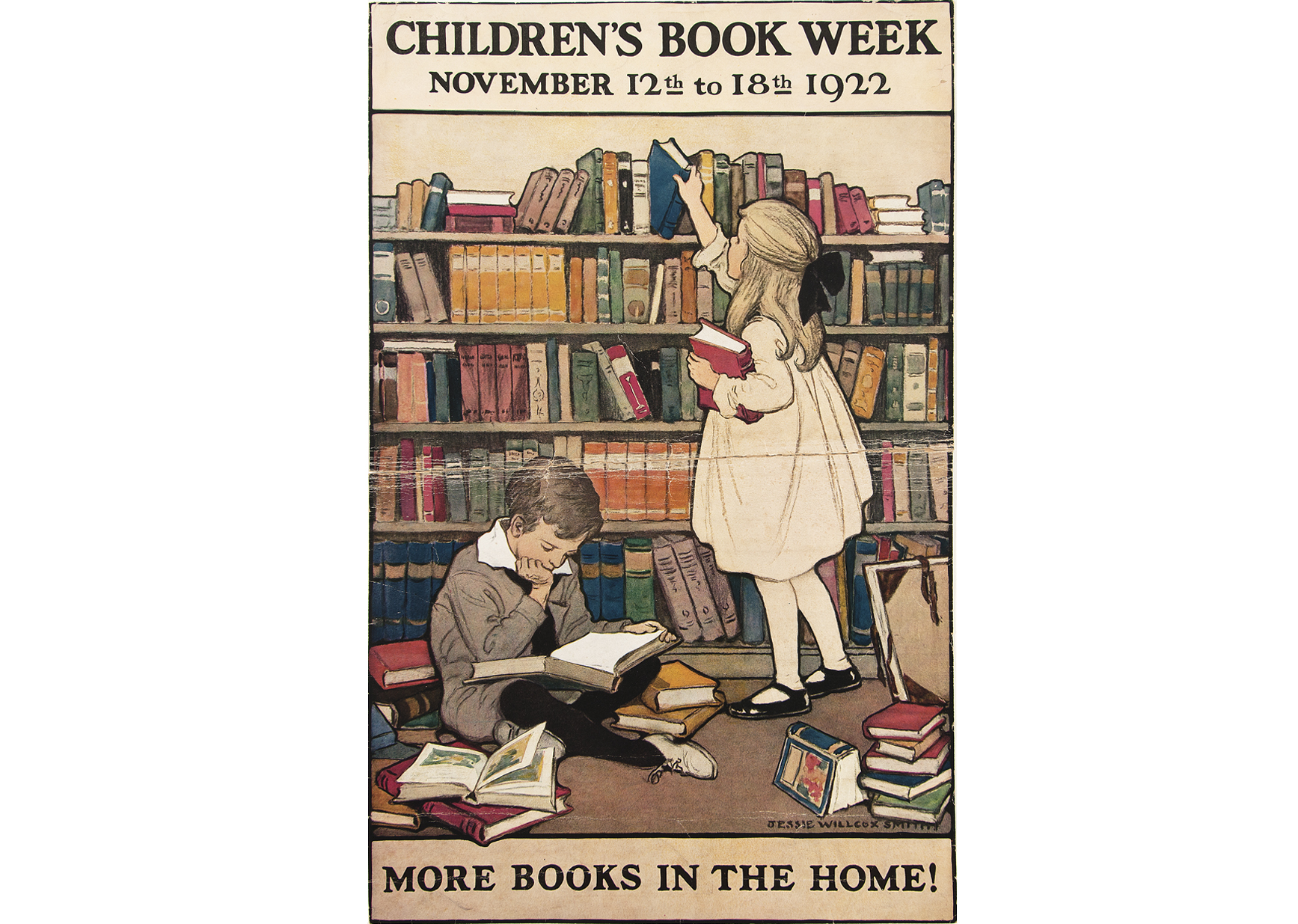Among the many cultural shifts and inventions of the Jazz Age, this period that spanned the 1920s and 1930s marked a transformative era for children’s literature in the United States. It was during this time that the concept of “childhood” as a distinct life stage gained prominence, leading to a cultural and educational development that recognized the unique needs of young learners. Key milestones such as the establishment of the Newbery Medal in 1922 and the Caldecott Medal in 1938 elevated the visibility and cultural value of children’s books and illustrations. This explosion and legitimization of children’s literature and illustration not only cemented a new industry and pathway for artists and storytellers but also empowered a generation of young learners with resources designed to engage them in this formative phase of life.
Today, we recognize the importance of supporting not only young learners, but community members looking to learn and grow their knowledge at all stages of life. Learning doesn’t begin and end in childhood. It spans a full spectrum, from early development to later adulthood. DelArt embraces its mission to serve as a resource in art and culture for all, and as we look toward 2025, we are excited to expand this commitment with new programs and expanded initiatives that further this work. By nurturing connections between art, culture, and education, we aim to inspire curiosity and empower creative thinkers across generations.
The Next Generation of Museum-Goers: Art and Learning for Early Childhood
One of our ongoing efforts to be a greater resource for young learners and families involves enhancing access to our collection of children’s literature. This year, our Art & Learning department has been meticulously cataloging all the children’s books throughout the Museum, to add them to our library catalogue and make them more easily searchable and retrievable. This effort will not only allow us to maintain a more detailed inventory and accounting of all the books for young learners that we have available in Kids’ Corner and other parts of the Museum, but it will also help us to identify areas of growth in our collection. As well, this project is laying the groundwork for a lending library in our Kids’ Corner, enabling children and families to borrow books and explore the magic of storytelling beyond their museum visit, a program we’re excited to roll out in 2025. By creating this resource, we are building on the Museum’s foundational bonds to narrative art and storytelling, fostering a love for reading and art while reinforcing the museum as a welcoming space for young visitors to discover, learn, and grow.
Empowering Our Creative Economy: The Museum Educator Development Program
Our dedication to learning extends to older learners in young adults and emerging professionals, through the Museum Educator Development Program. Inaugurated in 2019, this year-long program provides recent graduates and creatives interested in getting more experience in the museum world the opportunity to gain exposure and build the skills that will help them on their career path in the arts and culture sector. Members of our Museum Educator cohort not only learn fundamental methods and concepts of museum education (a week-long orientation trains them on subjects like childhood cognitive development stages and object-based facilitation), but they also have the opportunity to put them into practice by leading tours and developing tour curricula for learners of all ages. This past summer, our current cohort undertook an ambitious project to review and refurbish our tours for K-12 school visits, elevating them into fun and interactive gallery experiences with strong connections to Common Core State Standards. In addition to the robust training and development they receive in museum education, the Museum Educator program is designed to give each Educator the opportunity for broader career exploration and skill-building by taking on additional projects in other areas of the Museum. Participants in this year’s cohort are assisting with exhibition design, facilitating gallery talks alongside our curators, and helping to develop innovative new community programming.
With the recent losses of key art institutions locally and in the region, with the closures of DCAD, University of the Arts, and the Pennsylvania Academy of Fine Arts degree program, it is more vital than ever that our organization does its part to be a support and resource for young adults and creatives looking to build a sustainable future in the arts. By equipping them with professional opportunities and training, this program strengthens Delaware’s creative economy and expands access to museum careers, building the next generation of leaders in art and culture.
A New Chapter: The Loper Society for Lifelong Learners
In 2025, we will launch the Loper Society for Lifelong Learners, a new initiative and model for adult education and enrichment that is dedicated to fostering deep connection and meaningful experience in the arts. Taking cues from another type of cultural institution, colleges and universities, the program will consist of community-led clubs and special interest groups, to build a vibrant community of adult learners passionate about arts and culture. This program will offer workshops, lectures, and hands-on experiences tailored to prime adult learners eager for a robust social and cultural outlet within the Museum. The Loper Society is an exciting step forward in our efforts to broaden access to art and foster meaningful engagement with our collection and across the state.
As the museum continues to grow and innovate, we remain steadfast in our commitment to lifelong learning. Through art and education, we strive to be a cultural hub where visitors of every age can learn, connect, and thrive.
Zoe Akoto
Manager of Learning and Interpretation
Image: Children’s Book Week, November 12th to 18th, 1922. Jessie Willcox Smith (1863–1935). Advertising poster for Children’s Book Week, November 12th to 18th, 1922. Commercial lithograph, sheet: 21 3/16 × 13 7/16 inches. Found in collection.


